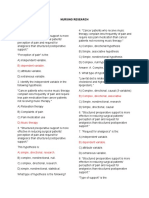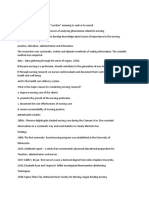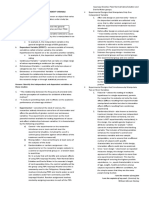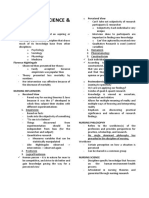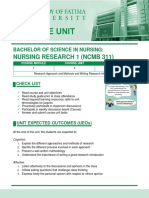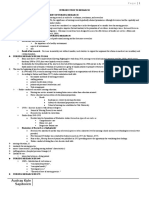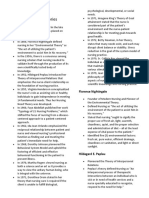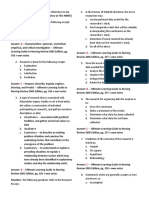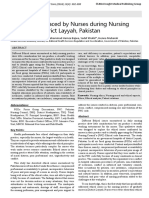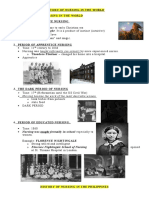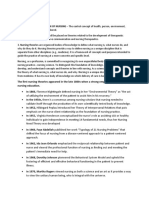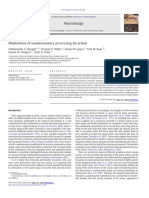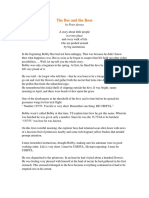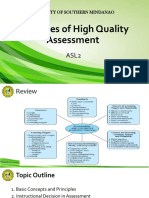0% found this document useful (0 votes)
255 views2 pagesNursing Research Notes
This document provides an overview of key concepts in quantitative and qualitative research methods, including:
1) Cross-sectional and longitudinal research designs for collecting data at one or multiple points in time.
2) Types of quantitative and qualitative research such as experimental, non-experimental, case studies, phenomenological, and ethnographic approaches.
3) Key terms and statistical analyses used in research like independent and dependent variables, deductive and inductive reasoning, measures of central tendency, t-tests, chi-square, and ANOVA.
Uploaded by
Nica Joy AplicadorCopyright
© © All Rights Reserved
We take content rights seriously. If you suspect this is your content, claim it here.
Available Formats
Download as PDF, TXT or read online on Scribd
0% found this document useful (0 votes)
255 views2 pagesNursing Research Notes
This document provides an overview of key concepts in quantitative and qualitative research methods, including:
1) Cross-sectional and longitudinal research designs for collecting data at one or multiple points in time.
2) Types of quantitative and qualitative research such as experimental, non-experimental, case studies, phenomenological, and ethnographic approaches.
3) Key terms and statistical analyses used in research like independent and dependent variables, deductive and inductive reasoning, measures of central tendency, t-tests, chi-square, and ANOVA.
Uploaded by
Nica Joy AplicadorCopyright
© © All Rights Reserved
We take content rights seriously. If you suspect this is your content, claim it here.
Available Formats
Download as PDF, TXT or read online on Scribd
/ 2


